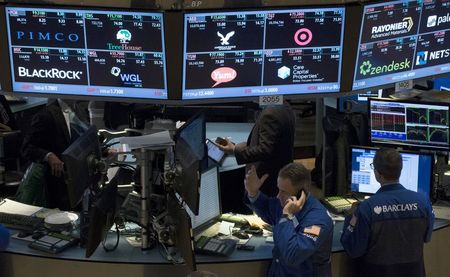A stop-loss order is an order to buy or sell a security when the price reaches a certain level. A stop-loss order is designed to limit an investor’s losses on a position in a security. There are two main types of stop-loss orders: stop market orders and stop-limit orders. A stop market order becomes a market order once the security reaches the designated price. A stop-limit order becomes a limit order once the security reaches the designated price.
But is there any benefit of using stop-loss orders when trading securities? It is commonly believed that stop loss can help protect an investor’s capital and avoid large losses on their investment. Reference [1] attempted to answer this question from a scientific point of view. It found that
…even though stop-loss rules have poorer mean returns to a mean-variance optimal benchmark, they are effective at stopping losses. These rules reduce overall and downside risk, especially during declining market states. The transaction costs analysis shows that the significant effectiveness of risk reduction holds for these rules with larger stop-loss thresholds.
This essay finds that stop-loss rules are an important factor of international equity allocation in a parametric portfolio policy setting. These rules generate portfolios with larger mean and risk-adjusted returns. This result is economically stronger in declining markets. The outperformance is robust once the transaction costs are accounted for.
Essay three shows that stop-loss rules enhance the returns to stocks with lottery features. Individual investors have a strong preference for lottery stocks that typically have irregular enormous gains and frequent small losses. Stop-loss rules are useful at reducing losses and protecting gains from large price rises. This essay highlights that the sell signals of popular technical rules and time-series momentum rules are consistent with stop-loss rules, thereby effectively increasing the risk-adjusted returns of lottery stocks. These rules would have helped investors avoid instances of major historical drawdowns and are particularly beneficial in recessionary markets. Some rules are robust to the inclusion of transaction costs.
In short, the finding was that stop-loss orders add value.
We believe that adding stop-loss rules would make a trade more complex. Usually, a trade is a bet on the terminal distribution or price dynamics of the underlying asset. Adding stop-loss rules would introduce path dependency, thus making the analysis more complicated. We would prefer using no stop loss. In order to avoid catastrophic losses, one can always use options as a hedge or trade options outright. Let us know what you think in the comment below.
References
[1] B. Dai, Essays on Stop-loss Rules, 2021, Massey University
Further questions
What's your question? Ask it in the discussion forum
Have an answer to the questions below? Post it here or in the forum




